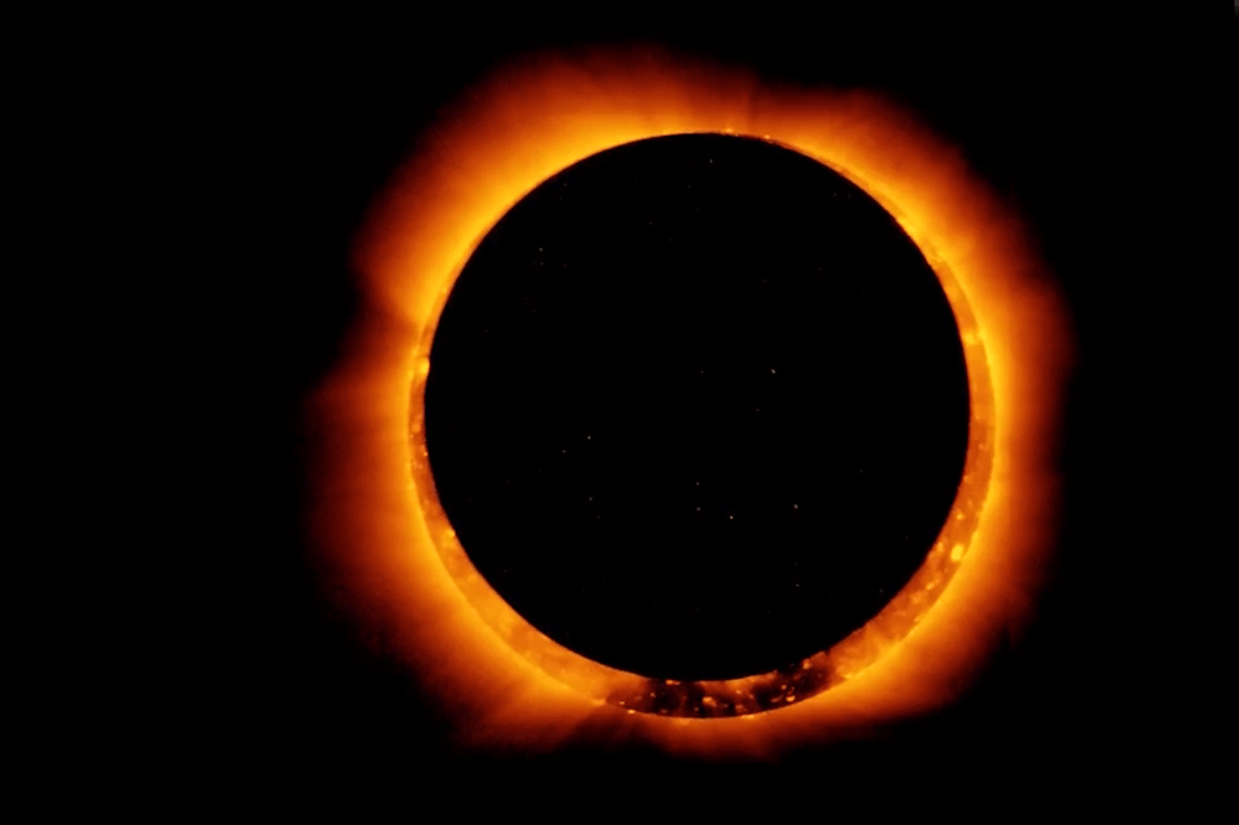Today marks a special moment for sky-watchers with the arrival of the highly anticipated annular solar eclipse. If you’re curious about today’s solar eclipse time, you’re in the right place.
This celestial event, sometimes called a “ring of fire” eclipse, is set to offer a breathtaking spectacle, particularly in parts of the Southern Hemisphere. While most of the United States won’t get a full view, there’s still plenty to look forward to.
What Happens During an Annular Solar Eclipse?
An annular solar eclipse occurs when the moon moves between Earth and the sun but is too far away to completely block the sun’s rays. Instead, it creates a glowing “ring of fire” around the moon. While this event won’t completely darken the sky, like a total solar eclipse, it still offers a stunning visual display.
More like this: Who Won the VP Debate? Key Moments and Reactions
The event on October 2, 2024 will mostly be visible in the Southern Hemisphere. However, if you’re in the U.S., you might be disappointed to hear that it won’t be visible across most parts of the country, except in Hawaii, where a partial eclipse can be seen. For more detailed information, check the solar eclipse October 2024 USA timings to see if you’re in the partial visibility zone.
What Is Today’s Solar Eclipse Time?
For those wondering, today’s solar eclipse time will vary depending on your location. The eclipse begins at 12:50 PM ET and will last until 4:39 PM ET. The peak of the event, when the moon covers the maximum portion of the sun, will occur at 2:45 PM ET, lasting for a little over seven minutes. In areas like Easter Island, the ring of fire will be visible at 3:07 PM ET, lasting for approximately 6 minutes and 23 seconds.
If you’re following the event from Hawaii, you’ll only see a partial eclipse, which will start around 11:43 AM EDT. For those in other regions, such as Chile or Argentina, the best views will occur closer to local afternoon times.
Where Can You See the Solar Eclipse?
The solar eclipse in USA October 2024 will not offer full visibility to most states. However, residents of Hawaii can still experience part of the action as the moon partially covers the sun. If you’re located in the Southern Hemisphere, particularly in Easter Island, Chile, or Argentina, you’ll be in prime position to witness the full ring of fire effect.
More like this: A Clash of Eras: Epic Mike Tyson vs Jake Paul Boxing Showdown
For those of you outside the direct path, like in Brazil, Mexico, or New Zealand, you’ll see a partial eclipse. Make sure to check the solar eclipse October 2024 time USA to see what portion of the eclipse you can observe.
Safe Ways to Watch the Solar Eclipse
No matter where you are, it’s essential to take safety precautions when watching the eclipse. Directly looking at the sun, even during a partial eclipse, can cause severe eye damage.
More like this: Massive Verizon Down: What Happened and How it Affects You
Make sure to use certified solar eclipse glasses or a solar viewer to safely observe the event. If you don’t have these tools, you can make a simple pinhole projector to project the eclipse onto the ground without looking at the sun directly.
Remember, regular sunglasses won’t protect your eyes adequately, and even during the peak of the annular eclipse, the sun’s rays remain dangerous.
Looking Ahead: Future Celestial Events
Once today’s solar eclipse time has passed, there’s still plenty to look forward to in the night sky. The next major lunar event will be the Hunter’s Moon on October 17, 2024, followed by the Beaver Moon in November. Additionally, meteor showers like the Orionids and Geminids will light up the sky toward the end of the year, providing more opportunities for stargazing enthusiasts.
Make sure you don’t miss out on any of these spectacular events, and keep track of upcoming astronomical phenomena by noting the relevant dates!








